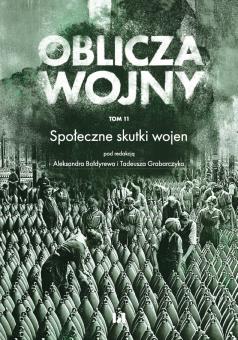Badania archeologiczne wartowni nr 5 na Westerplatte, miejsca śmierci obrońców wojskowej składnicy tranzytowej

Oglądaj/
Data
2024-12-30Autor
Dziewanowski, Adam
Garlicki, Przemysław
Jarzęcka-Stąporek, Joanna
Kalka, Piotr
Metadata
Pokaż pełny rekordStreszczenie
Dział Archeologiczny Muzeum II Wojny Światowej w Gdańsku przeprowadził badania archeologiczne reliktów wartowni nr 5 na Westerplatte. Prace prowadzono w ramach VII etapu badań archeologicznych na półwyspie, które rozpoczęto w 2016 r. W obrębie wykopu nr 12 odsłonięto relikty dolnej kondygnacji wartowni, co pozwoliło na ustalenie dokładnej lokalizacji i rozmiarów budynku oraz zrekonstruowanie rozplanowania i funkcji poszczególnych pomieszczeń. W trakcie prowadzonych prac natrafiono na kilkanaście ludzkich kości – szczątków polskich żołnierzy znajdujących się w budynku w momencie jego zniszczenia przez bomby niemieckiej Luftwaffe, 2 września 1939 r. W gruzach wartowni zginęło co najmniej siedmiu polskich obrońców. W trakcie badań budynku odnaleziono 4645 zabytków wydzielonych (o największej wartości naukowej i wystawienniczej), dla których prowadzony był osobny inwentarz polowy zabytków wydzielonych. W obrębie wykopu nr 12 zadokumentowano również pozostałości wzmocnionego ogrodzenia z siatki Ledóchowskiego oraz częściowo zachowany lej po niemieckiej bombie 50 kg z 2 września 1939 r. W zasypisku leja odnaleziono fragment zachodniej ściany górnej kondygnacji wartowni. Pozostałości wartowni nr 5 oraz fundamenty wzmocnionego ogrodzenia z siatki Ledóchowskiego są dziś eksponowane w formie trwałej ruiny w strefie dojścia do nowego cmentarza żołnierzy Wojska Polskiego na Westerplatte, który otwarto 4 listopada 2022 r. Na nowym cmentarzu spoczęło dziesięciu obrońców Wojskowej Składnicy Tranzytowej. Większość z nich zginęła w zbombardowanej wartowni nr 5. In 2021, the Archaeological Department of the Museum of the Second World War in Gdańsk conducted archaeological research of the relics of Guardhouse No. 5 at Westerplatte. The works were carried out as part of the 7th stage of archaeological research on the peninsula, which began in 2016. Within excavation No. 12, relics of the lower storey of the guardhouse were uncovered, which allowed to determine the exact location and size of the building and to reconstruct the layout and function of individual rooms. During the works, several human bones were found – the remains of Polish soldiers who were in the building when German Luftwaffe bombs destroyed it on September 2, 1939. At least seven Polish defenders died in the rubble of the guardhouse. During the examination of the building, 4,645 artefacts (of the highest scientific and exhibition value) were found, for which a separate field inventory of artefacts was kept. Within the excavation no. 12, the remains of a reinforced fence made of Ledóchowski’s mesh and a partially preserved shell-pit from a German 50 kg bomb from September 2, 1939 were also documented. A fragment of the western wall of the upper storey of the guardhouse was found in the shell-pit fill. The remains of the guardhouse no. 5 and the foundations of the reinforced fence made of Ledóchowski’s mesh are now exhibited in the form of a permanent ruin in the access zone to the new military cemetery of Polish Army soldiers at Westerplatte, which was opened on November 4, 2022. Ten defenders of the Military Transit Depot are buried in the new cemetery. Most of them died in the bombed guardhouse No. 5.
Collections

